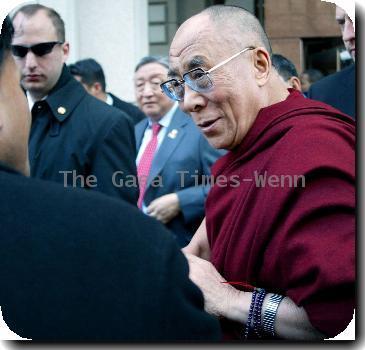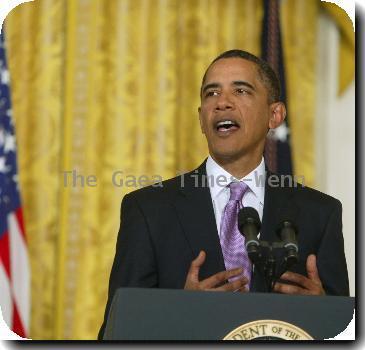Aiming to keep Obama’s promise, US team recovers Chile’s last weapons-grade uranium
By Michael Warren, APWednesday, April 7, 2010
Chile gives its last weapons-grade uranium to US
SANTIAGO, Chile — Deep inside the containment building of a nuclear reactor that Chilean dictator Augusto Pinochet built for his army, an aging engineer in a white lab coat struggled with a common house key to unlock a closet door.
Opening a dusty wooden box he pulled from a shelf, he revealed an array of thin aluminum-coated plates, and lifted one out with his bare hands.
“This is it,” said Hugo Torres, the reactor’s operations manager.
“It” is highly enriched uranium 235, HEU for short. It’s the material that most worries anti-terrorism experts. Just 25 kilograms (55 pounds) of it in a nuclear bomb could devastate an entire city, in the same way the United States destroyed Hiroshima and Nagasaki during World War II.
President Barack Obama’s major shift in U.S. nuclear strategy puts a new emphasis on securing this kind of weapons-grade nuclear material, recognizing that terrorists and rogue states pose a much more immediate threat than the old fears of a communist nation provoking nuclear Armageddon by attacking the U.S. or its allies.
“For the first time, preventing nuclear proliferation and nuclear terrorism is now at the top of America’s nuclear agenda,” Obama said before signing a new START treaty with Russia to sharply reduce the number of warheads each country has ready to fire.
Obama now hopes to enlist leaders of 47 other nations at a White House summit beginning Monday to help him keep an ambitious promise, made a year ago this week, to secure all the world’s vulnerable nuclear material within four years.
Obama has proposed a 68 percent increase in the Global Threat Reduction Initiative’s budget to $559 million next year, to recover more HEU and fight smuggling of nuclear material by strengthening border controls and port security.
But the U.S. needs extensive cooperation from other nations to get the job done — and Chile has become an example of how small countries can play a big part in the process.
Chile was among the first to agree to surrender its last HEU, 18 kilograms (40 pounds) it got from Britain and France for its two research reactors. A team of Americans finally shipped it out last month just after the country’s massive earthquake, weaving a convoy of trucks around shattered highways in the middle of the night to reach a functioning port.
The Associated Press documented the transfer, agreeing to keep the details secret until the material arrived safely in the United States.
The mission will be the first of many if Obama is to keep his promise.
The U.S. has already recovered 91 percent of the 1,362 kilograms (3002 pounds) of U.S.-origin HEU from reactors around the world, bringing it for safekeeping and reprocessing to the Savannah River Site in South Carolina and the Y-12 National Security Complex, the government’s fortress-like HEU repository in Oak Ridge, Tenn.
Since the end of the Cold War, the U.S. also has provided the equipment and expertise to bring back to Russia more than 53 percent of the 2,351 kilograms (5,183 pounds) of HEU the Soviet Union sent to other countries.
But 680 kilograms (1,500 pounds) of potentially weapons-usable HEU supplied by countries other than the U.S. and Russia is still out there, and vulnerable.
That’s where Chile fits in, reflecting the United States’ worst nightmare — a cache of relatively unsecured, highly enriched uranium — and showing the world how working with the U.S. can make nuclear programs safer.
The U.S. government already has helped convert or verified the shutdown of 67 reactors in 32 countries from HEU to low-enriched uranium, or LEU, which is much harder to weaponize. Chile’s civilian La Reina reactor already has been converted, using the LEU to create medical isotopes for cancer patients. Without the HEU in the reactor pool, the Lo Aguirre reactor Pinochet built can be converted more easily as well.
The U.S. also has reinforced more than 750 vulnerable buildings where HEU is stored around the world, including spending $100,000 in 2005 to install alarms, motions sensors, bulletproof glass and other security measures at Lo Aguirre.
But safely disposing of HEU requires particular expertise, expensive technology and years of planning and diplomacy. No other country but the United States has put all these elements together — even Russia depends on the U.S. do to this dirty work.
Chile’s HEU was mostly spent fuel, stored in underwater racks inside cooling tanks — and was too radioactive to steal.
More worrisome was “fresh” fuel, the plates kept for years in wooden boxes in a lightly guarded closet at Lo Aguirre. It hadn’t been irradiated yet. And like Torres, anyone could handle it without being poisoned — making it easier to steal or sell on the black market and much more dangerous from a terrorism perspective.
Any nuclear material could be combined with a conventional explosive and used in a dirty bomb that scatters radioactivity in a limited area. Such an attack in the middle of a city could disrupt normal life and cost billions to clean up.
But if terrorists get enough HEU, they could detonate a nuclear bomb in a giant mushroom cloud, causing widespread death and destruction.
“We are happy to see it go,” said Fernando Lopez, who runs the Chilean Nuclear Energy Commission.
“Countries normally don’t want to be loaded with waste from other countries,” Lopez said, thanking the American removal team. “To put it in a safe place is valuable for everybody … we want to make this a safer world.”
When the day finally came to remove Chile’s HEU, muscle, sweat and rock and roll helped put the years of planning and high-tech equipment into action.
A radio blasted Black Sabbath’s “Iron Man” as Americans and Chileans strained together with nylon rope and a claw at the end of a 20-foot pole to wrestle six racks of highly radioactive HEU into a protective cylinder for transport. One by one, they lifted the racks from the ionized blue water of La Reina’s reactor pool, and inserted them inside a cylinder lined with 8 inches of lead and stainless steel to contain the radioactivity.
Any false move could have caused a major cleanup disaster if the racks tipped and spilled the plates, wafer-thin and nearly a meter (yard) long, onto the reactor floor. Luckily, the world’s worst earthquake in a half-century was still days away. The cylinder was closed and lifted out of the pool by a winch. Then, everyone backed off as Torres checked for leaks with a particle detector on a 10-foot pole.
“Fourteen millirems,” he announced, and the observers relaxed, just a bit: Someone would have to touch the outside of the cask for two hours to get as much radiation as a typical chest X-ray.
With Chilean Army MPs standing watched, the cylinder then was lowered onto a customized forklift, rolled out of the reactor building and lifted by a huge crane onto a towering metal cask with still-thicker walls. A U.S. contractor climbed up and spun a wheel, lowering the fuel from the cylinder into the cask without exposing radioactivity. The cask was then lowered into a shipping container that seems perfectly typical from the outside, but inside has a metal bed designed to prevent the contents from shifting on its ocean journey.
The team repeated the drill at the former military reactor in Lo Aguirre, just off a highway south of the capital. Another huge metal cask was filled with spent fuel, and fresh fuel from two wooden boxes was loaded into separate stainless steel barrels.
All told, it took two cargo containers weighing 30 tons each to protect just 18 kilograms (40 pounds) of uranium.
When the magnitude-8.8 earthquake struck, the radioactive material was already packed tightly away, ready for shipment. But the planned exit route was impossible — huge cracks in the highway and the crane at the port was out of commission. Working closely with the Chileans, the team figured out a roundabout, eight-hour way to reach a functioning port, and drove through the night to reach the U.S. ships.
Lo Aguirre raised fears about Chile’s nuclear intentions during Pinochet’s long dictatorship. But the generals never found a useful purpose for the HEU and finally shelved the military’s nuclear program as too costly. The reactor hasn’t been active for more than a decade. Its control room, now in civilian hands, is frozen in time, with outmoded computers and indicator panels.
Chile’s older civilian reactor, La Reina, was converted to LEU about five years ago with U.S. help.
Now that both reactors are free of HEU, Chile can worry less about thwarting terrorists. The government also hopes to show citizens it is managing waste responsibly — a key step toward securing popular approval for building nuclear power plants, explained Juan Carlos Chavez, a top Chilean nuclear scientist.
“It’s a win-win,” Chavez said. “Without energy, we can’t have development. But you can’t sell the people a camel telling them that it’s a horse…. We have to include in the discussion what we’re going to do with the waste.”
After two and a half weeks at sea, a specially outfitted double-hulled ship arrived under U.S. Coast Guard escort in late March at the Charleston Weapons Station in South Carolina. Customs agents and nuclear inspectors climbed on board, measuring for radiation in the vast cargo hold before clearing its crew.
A massive crane then gingerly lifted out the containers and loaded them onto flatbed trucks adapted to safely handle the extra weight. Another radiation check, and they were off, bound for Savannah River and Y-12.
Chile’s HEU will remain radioactive for 5,000 more years, but much of it will be converted to safer fuel and resold for nuclear power. In any case, it’s a good bet now that it won’t end up in a bomb.
Warren reported from Chile and Kinnard reported from South Carolina.
Tags: Barack Obama, Border Security, Chile, Eastern Europe, Energy, Europe, Latin America And Caribbean, North America, Nuclear Weapons, Political Issues, Russia, Santiago, South America, South Carolina, Terrorism, United States, Utilities, Waste Management, Weapons Administration, Weapons Of Mass Destruction



